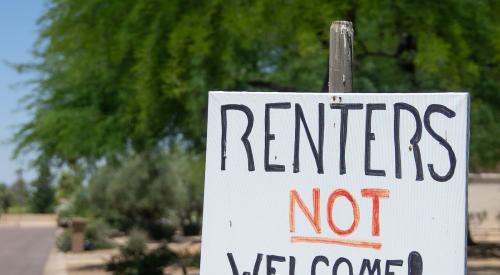Most major cities lack affordable homes, but research shows one-third of U.S. suburban neighborhoods also have few options for renters. According to a recent study from the Joint Center for Housing Studies of Harvard University, rental deserts—or areas where only 20% of housing is available for renters—are disproportionately made up of white and high-income households. The study also indicates policy could be to blame for the lack of affordable and rental homes in these areas as stricter land use regulations tend to be common in such places.
We first investigated the characteristics of neighborhoods that have a low share of homes occupied by renters or vacant for rent. Rental deserts are disproportionately located in the suburbs, where restrictive land use regulations and not-in-my-backyard (NIMBY) politics can be common, and they are underrepresented in urban neighborhoods. In fact, suburban tracts account for 55 percent of all tracts nationally but 68 percent of rental desert neighborhoods. Rental deserts are dominated by single-family homes, which make up an average of 85 percent of the housing units in these neighborhoods.













